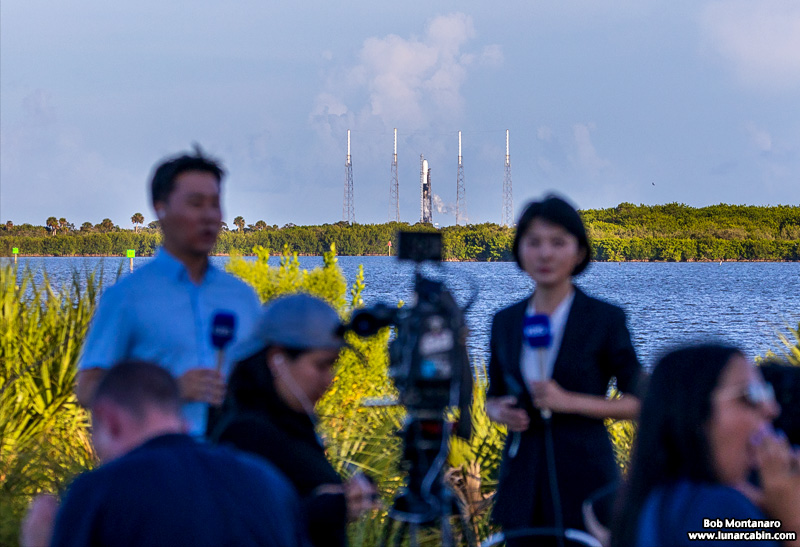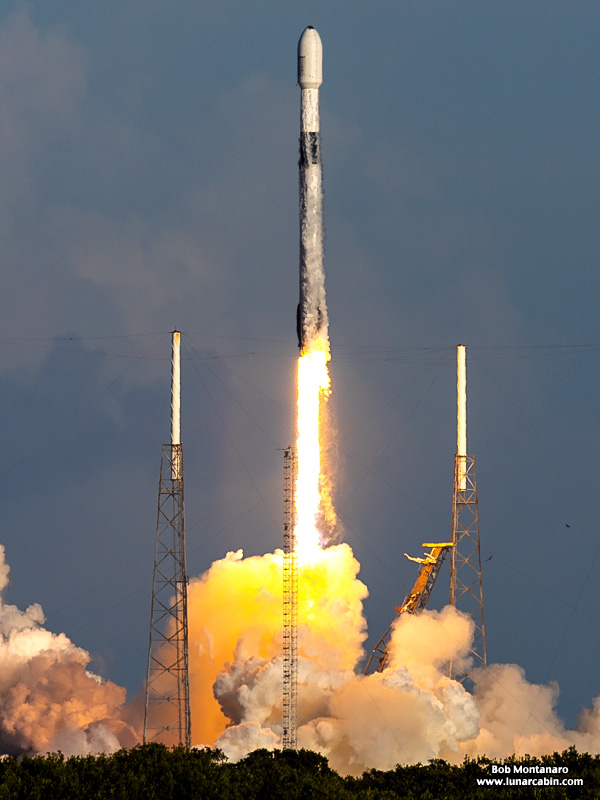 |
|
KPLO (Falcon 9) 4 August 2022 |
Space Launch Complex 40 Cape Canaveral Space Force Station |
A SpaceX Falcon 9 rocket launched the Korean Pathfinder Lunar Orbiter (KPLO) to a ballistic lunar transfer orbit from Space Launch Complex 40 (SLC-40) at Cape Canaveral Space Force Station at 7:08 p.m. on 4 August 2022. After stage separation, the first stage landed on the Just Read the Instructions droneship stationed in the Atlantic Ocean. The Falcon 9 first stage booster supporting this mission previously launched Arabsat-6A, STP- 2, COSMO-SkyMed Second Generation FM2, and two Starlink missions. This was the second launch from Cape Canaveral Space Force Station on 4 August 2022. The first being a United Launch Alliance Atlas V rocket launching the SBIRS GEO 6 mission. |
|
 |
|
Predawn view of SLC-40 with KPLO on the pad. |
|
 |
|
 |
|
Reporters from the Korean Broadcasting System (KBS), the national broadcaster of South Korea, covering the launch live. |
|
 |
|
The KBS reporters with the rocket in the background. |
|
 |
|
 |
|
 |
|
 |
|
 |
|
 |
|
 |
|
 |
|
 |
|
 |
|
 |
|
 |
|
 |
|
FROM NASA |
|
 |
|
An artist's impression of KPLO flying over Shackleton Crater on the Moon with the NASA-supplied ShadowCam instrument in operation. The ShadowCam will acquire images of shadowed regions of the moon using a high-resolution camera, telescope, and highly sensitive sensors. IMAGE: NASA Description Spacecraft and Subsystems Mission Profile |
|
SPACEX KPLO MISSION PATCH |
|
 |
|
All contents copyright Lunar Cabin |
|